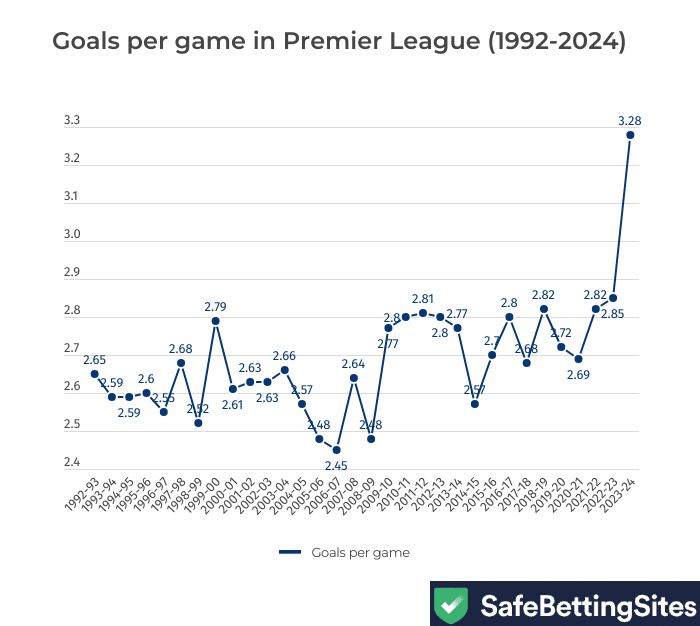The 2023-24 Premier League season has just ended, with Manchester City claiming their fourth consecutive title. The just-finished season proved to be a record-breaking one as it witnessed a record number of goals. According to the numbers presented by SafeBettingSites.com, an average of 3.28 goals were scored every game in the 23-24. Previously, none of the PL seasons had witnessed a goal rate higher than 2.85 goals per game.
A 12.7% increase on the previous record

The recently concluded 2023-24 Premier League season was a historic one as it saw the highest number of goals scored in the league’s history. A total of 1246 goals were scored in 380 games during the season. Hence, goals were scored at the rate of 3.28 goals per game. This is a notable development in the goalscoring rate in the top tier of English football, as no other previous season in the league has even come close to this rate, 3.28/game, of scoring goals.
The previous record was set during the previous season, 2022-23 when teams scored a total of 1084 goals at the rate of 2.85 goals per game. However, that record lasted for only one season as Premier League teams scored a massive 1222 goals, 138 goals more than the previous season, in 23-24. Thus, the Premier League improved on its previous record by a significant 12.7%.
The goal rush in the Premier League this season could be attributed to a couple of major factors. Firstly, top teams scored a lot more goals in 2023-24. There were four teams that scored more than 80 goals during the season, while only two did the same last season.
Secondly, the relegated sides, led by Sheffield United, conceded a relatively higher number of goals in 2023-24. The bottom three sides this season conceded a total of 267 goals. Meanwhile, the relegated sides in the 2022-23 season conceded a total of 219 goals. Thus, the bottom three sides conceded 48 goals more in 23-24.
Additionally, there is no clear trend to be observed in the historic goalscoring data from the Premier League. However, one can argue that the goalscoring rate declined between 2004-05 and 2008-09, and it has been on the rise, with some exceptions, from 2009-10 onwards.







